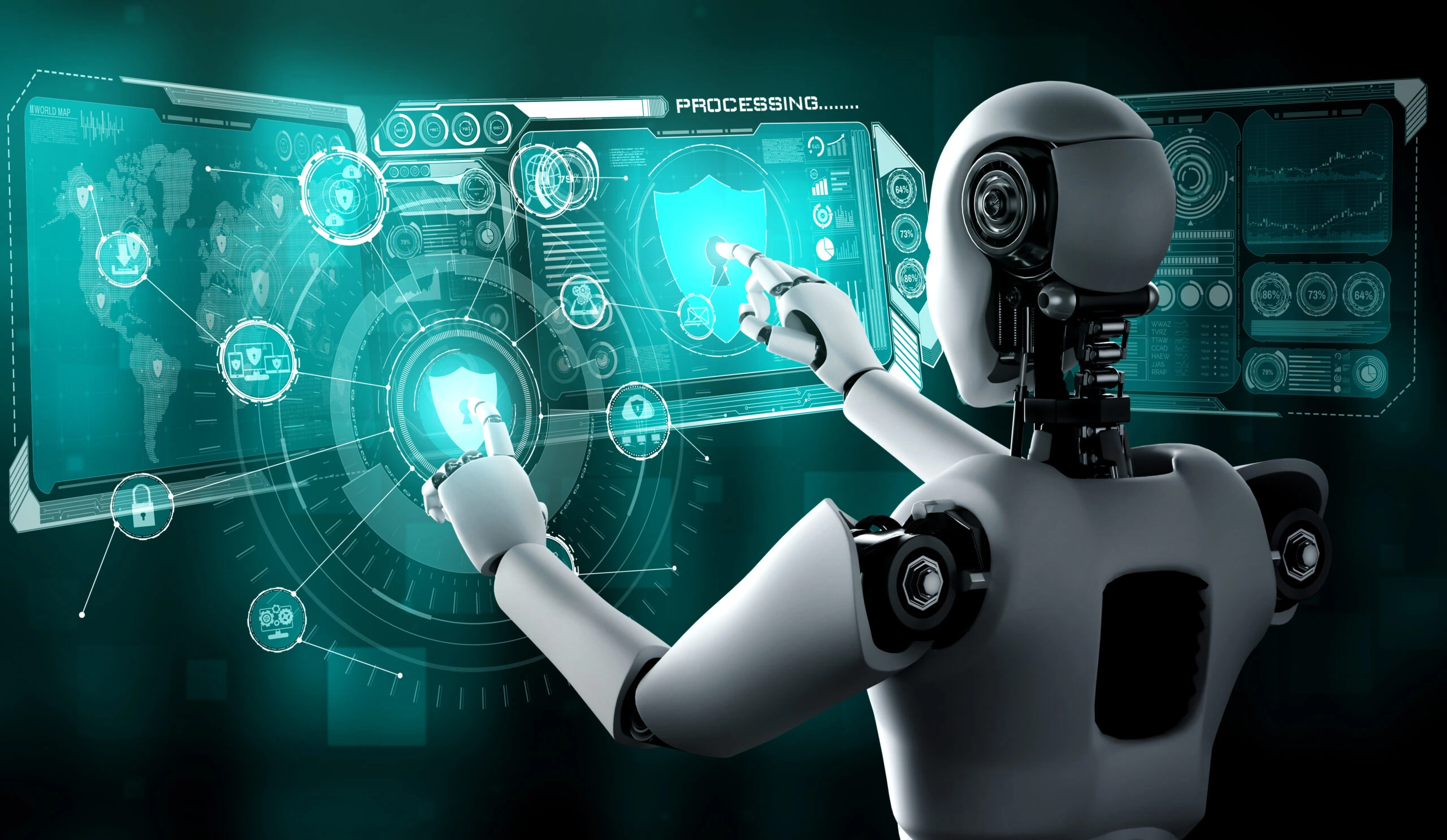Artificial Intelligence (AI) is one of the most revolutionary technologies shaping the world today. From virtual assistants like Siri and Alexa to self-driving cars, fraud detection systems, chatbots, and even medical diagnosis tools—AI is everywhere. Yet, many people still wonder: What exactly is Artificial Intelligence?
This beginner’s guide will provide a detailed explanation of AI, its history, types, applications, benefits, challenges, and its future. By the end of this article, you will have a clear understanding of AI and why it matters in our daily lives.
What Is Artificial Intelligence?
Artificial Intelligence, or AI, refers to the ability of machines or computer systems to perform tasks that normally require human intelligence. These tasks include learning, reasoning, problem-solving, decision-making, speech recognition, and visual perception.
In simple terms, AI enables machines to think, learn, and act like humans, but in many cases, they can process information much faster and more efficiently.
Key Characteristics of AI:
- Learning from data (Machine Learning)
- Understanding natural language (NLP)
- Making decisions and predictions
- Adapting to new inputs
- Performing repetitive tasks with accuracy
A Brief History of Artificial Intelligence
AI is not a new concept—it has been evolving for decades.
- 1940s–1950s: The early foundation of AI was laid when mathematicians like Alan Turing introduced the concept of machines simulating human intelligence. His famous Turing Test became a benchmark for measuring machine intelligence.
- 1956: The term “Artificial Intelligence” was first introduced at the Dartmouth Conference, marking the official beginning of AI research.
- 1960s–1970s: Early AI programs such as ELIZA (a chatbot) and Shakey the Robot were created. However, due to limited computing power, progress was slow.
- 1980s–1990s: AI saw major advancements with expert systems, which could mimic human decision-making in specific domains like medicine.
- 2000s–Present: With the rise of Big Data, Machine Learning, and Deep Learning, AI experienced massive growth. Technologies like speech recognition, facial recognition, and self-driving cars became a reality.
Types of Artificial Intelligence
AI can be classified into three main categories based on its capabilities:
1. Artificial Narrow Intelligence (ANI)
- Also known as Weak AI
- Specialized in performing a single task
- Examples: Google Search, Siri, Alexa, Netflix recommendations
2. Artificial General Intelligence (AGI)
- Also known as Strong AI
- Has human-like intelligence
- Can perform multiple tasks, think, and learn independently
- Still theoretical; researchers are working to achieve AGI
3. Artificial Superintelligence (ASI)
- A futuristic concept where machines surpass human intelligence
- Could potentially solve complex global problems but also poses risks
- Still in research and debate stage
Core Technologies Behind AI
To understand AI better, let’s look at the technologies that power it:
1. Machine Learning (ML)
A branch of AI that enables systems to learn from data without being explicitly programmed.
2. Deep Learning (DL)
A subset of ML that uses neural networks to process large amounts of data and recognize patterns.
3. Natural Language Processing (NLP)
Allows machines to understand, interpret, and respond to human language.
- Examples: Chatbots, Google Translate, Voice Assistants
4. Computer Vision
Enables machines to interpret and analyze images or videos.
- Examples: Face recognition, medical imaging, autonomous cars
5. Robotics
AI-driven robots that can perform tasks in manufacturing, healthcare, and even space exploration.
Applications of Artificial Intelligence
AI is transforming almost every industry. Here are some practical applications:
1. Healthcare
- AI in medical diagnosis
- Predicting diseases
- Drug discovery
- Robotic surgery

2. Finance
- Fraud detection
- Algorithmic trading
- Credit scoring
- Personalized banking services
3. Retail & E-Commerce
- Product recommendations (Amazon, Flipkart)
- AI chatbots for customer support
- Inventory management
4. Transportation
- Self-driving cars (Tesla, Waymo)
- Traffic management systems
- Smart navigation apps
5. Education
- Personalized learning platforms
- AI tutors and virtual classrooms
- Automated grading systems
6. Entertainment
- Netflix & YouTube recommendations
- AI in video games
- Content creation tools
7. Daily Life
- Voice assistants (Google Assistant, Alexa)
- Smart home devices
- AI-powered cameras in smartphones
Benefits of Artificial Intelligence
AI offers a wide range of advantages:
- Efficiency & Speed: AI can process huge datasets in seconds.
- Accuracy: Reduces human errors in tasks like medical diagnosis or data analysis.
- Automation: Saves time by automating repetitive tasks.
- Personalization: Offers customized experiences (e.g., shopping, entertainment).
- 24/7 Availability: Unlike humans, AI systems don’t need breaks.

Challenges and Risks of AI
Despite its benefits, AI also comes with challenges:
- Job Loss: Automation could replace certain human jobs.
- Bias in AI: AI systems can inherit biases from training data.
- Privacy Issues: AI-driven surveillance and data misuse.
- Security Concerns: AI can be misused in cyberattacks.
- Ethical Dilemmas: Autonomous weapons, decision-making without human input.
Future of Artificial Intelligence
The future of AI is promising yet uncertain. Experts believe AI will:
- Revolutionize Healthcare: More accurate diagnosis and treatments.
- Advance Robotics: AI-powered robots in homes and industries.
- Transform Education: Fully personalized learning systems.
- Improve Sustainability: AI in climate change solutions and resource management.
- Create New Jobs: AI will replace some jobs but create new opportunities in AI development, maintenance, and ethics.
However, it’s important to regulate AI responsibly to avoid misuse. Governments, companies, and researchers must collaborate to ensure AI is safe and beneficial for all.
How Beginners Can Learn AI
If you are a beginner interested in AI, here are some steps to get started:
- Learn the Basics of Programming (Python is highly recommended).
- Study Mathematics (Linear Algebra, Statistics, Probability).
- Explore Online Courses (Coursera, Udemy, edX).
- Practice with AI Tools (TensorFlow, PyTorch, Scikit-Learn).
- Work on Projects (Chatbots, Image recognition apps).
- Stay Updated with AI news, research papers, and communities.
Conclusion
Artificial Intelligence is not just a buzzword—it is a transformative technology shaping the future of humanity. From healthcare to finance, education to entertainment, AI is revolutionizing industries and daily life.
For beginners, understanding AI may seem overwhelming, but by breaking it into simple concepts—types, applications, benefits, and risks—it becomes easier to grasp.
AI is not here to replace humans; it’s here to empower us, make our lives easier, and open new possibilities. The key lies in using AI responsibly to ensure it benefits society as a whole.
More For You
1.ChatGPT AI কীভাবে ব্যবহার করবেন – বিস্তারিত গাইড (বাংলায়)
2.Best AI Tools for Students: Boost Your Academic Performance in 2025
3.How to Use an AI Image Generator: A Step-by-Step Guide for Beginners
4.How AI Code Assistants Are Redefining Software Development

